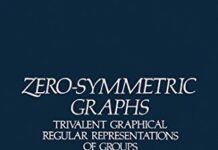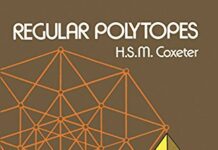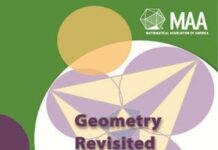
Ebook Info
- Published: 2003
- Number of pages: 174 pages
- Format: PDF
- File Size: 7.77 MB
- Authors: H.S.M. Coxeter
Description
In Euclidean geometry, constructions are made with ruler and compass. Projective geometry is simpler: its constructions require only a ruler. In projective geometry one never measures anything, instead, one relates one set of points to another by a projectivity. The first two chapters of this book introduce the important concepts of the subject and provide the logical foundations. The third and fourth chapters introduce the famous theorems of Desargues and Pappus. Chapters 5 and 6 make use of projectivities on a line and plane, respectively. The next three chapters develop a self-contained account of von Staudt’s approach to the theory of conics. The modern approach used in that development is exploited in Chapter 10, which deals with the simplest finite geometry that is rich enough to illustrate all the theorems nontrivially. The concluding chapters show the connections among projective, Euclidean, and analytic geometry.
User’s Reviews
Editorial Reviews: From the Back Cover In Euclidean geometry, constructions are made with a ruler and compass. Projective geometry is simpler: its constructions require only a ruler. In projective geometry one never measures anything, instead, one relates one set of points to another by a projectivity.This classic book introduces the important concepts of the subject and provides the logical foundations, including the famous theorems of Desargues and Pappus and a self-contained account of von Staudt’s approach to the theory of conics. The modern approach used in this account is then utilized to deal with the simplest finite geometry that is rich enough to illustrate all the theorems nontrivially. The book concludes by demonstrating the connections among projective, Euclidean, and analytic geometry.From the reviews of Projective Geometry:…The book is written with all the grace and lucidity that characterize the author’s other writings. … -T. G. Room, Mathematical ReviewsThis is an elementary introduction to projective geometry based on the intuitive notions of perspectivity and projectivity and, formally, on axioms essentially the same as the classical ones of Vebber and Young…This book is an excellent introduction.- T. G. Ostrom, Zentralblatt
Reviews from Amazon users which were colected at the time this book was published on the website:
⭐fast shipping, item as promised
⭐Very nice product. Shipping was very fast. I love this book.
⭐Great
⭐If all you have is a straight-edge but no compass, you can’t make right angles or parallel lines. Preserving distances between points becomes meaningless, because you can’t faithfully translate distance between arbitrary points to a ruler. What’s geometry like if infinity doesn’t exist? Does anything meaningful remain? The answer is a definite “yes”.
⭐Coxeter provides good coverage of the fundamental concepts of synthetic projective geometry. This is a good introductory book. The examples provided are clear. Coxeter’s style is concise. Topics such as Desargues theorem , Pappus’s theorem and conics are covered. The solutions to some exercises can be found in the back of the book. The book addresses finite geometries and analytic projective with a chapter on each.
⭐This book takes the axiomatic approach to the build-up of projective geometry, which has its roots in the work of von Staudt. It’s an alternative to the coordinate or “analytic” approach which is found in many older texts e.g. Todd [1]. However, coordinates are covered toward the end of the book. I found the treatment of polarities particularly useful: these are developed first, independently of conics, which are then shown to result from polarities. Also illuminating is the treatment of affine and Euclidean geometry, which are introduced as specialisations of projective geometry. By singling out a plane at infinity (so you can define parallels) you get affine geometry; then by specifying within this a particular polarity you get a definition of right angles, and from that the Euclidean angle and distance measures. In my own (doubtless naive) view you can take these “geometries” as different levels of description of the same underlying “stuff”, i.e. flat three dimensional space.This line of development makes for a very concise presentation. For example, in the purely projective view there is just one kind of conic: ellipses, hyperbolas and so on are only distinguished when the line at infinity is specified. Which said, it might not be the easiest read for newbies. For that I’d recommend Olive Whicher [2]. But a very solid and useful reference and definitely worth a place on the shelf.[1] Todd J., Projective and Analytical Geometry; London: Pitman 1954[2] Whicher O., Projective Geometry: Creative Polarities in Space and Time; London: Rudolf Steiner Press 1971
⭐item received on time, the same as advertised,
Keywords
Free Download Projective Geometry 2nd Edition in PDF format
Projective Geometry 2nd Edition PDF Free Download
Download Projective Geometry 2nd Edition 2003 PDF Free
Projective Geometry 2nd Edition 2003 PDF Free Download
Download Projective Geometry 2nd Edition PDF
Free Download Ebook Projective Geometry 2nd Edition




